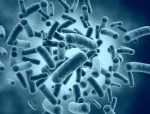Reduced Mitochondria Proteins May Serve as Diagnostic Biomarker of MG

The dynamics of mitochondria — the cells’ powerhouses — and their associated energy metabolism are highly affected in people with myasthenia gravis (MG), a study shows.
Notably, the levels of several proteins involved in mitochondrial dynamics and health were found to be significantly reduced in MG patients, and many of these factors allowed for an accurate distinction between patients and healthy individuals.
These findings suggest that these mitochondria-related proteins may serve as diagnostic biomarkers of MG, the researchers said, noting that “developing novel methods to diagnose MG is vital.”
The study, “Mitochondrial dynamics and biogenesis indicators may serve as potential biomarkers for diagnosis of myasthenia gravis,” was published in the journal Experimental and Therapeutic Medicine.
MG is an autoimmune disease caused by the abnormal production of self-reactive antibodies against proteins that play a key role in the function of the neuromuscular junction (NMJ) — the point of contact between nerve cells and the muscles they control, and where nerve-muscle communication takes place. Such impairments lead to muscle weakness and fatigue.
Currently, an MG diagnosis is based mainly on the presence of specific symptoms and antibodies against specific NMJ proteins, including the anti-acetylcholine receptor (AChR) and/or anti-muscle-specific tyrosine kinase (MuSK).
However, about “10% of patients with MG test negative for both anti-AChR and anti-MuSK [antibodies],” highlighting the need for additional diagnostic biomarkers, the researchers wrote.
Mitochondria are membrane-enclosed structures within cells that regulate energy production, cell growth, and cell death. Mitochondrial function depends on their structure, dynamics, and biogenesis, or the formation of new mitochondria.
“Both muscle contraction and relaxation require mitochondria for energy supply,” and “mitochondrial dysfunction affects muscle function, leading to atrophy [wasting],” the researchers wrote.
However, whether mitochondrial function is affected in MG and could serve as a diagnostic biomarker of the rare disease remains largely unknown.
To address this, a team of researchers in China analyzed the levels and diagnostic potential of several molecules involved in mitochondrial dynamics and biogenesis in peripheral blood mononuclear cells (PBMCS) of 50 MG patients and 50 healthy people.
PBMCS are immune blood cells with a round nucleus — the compartment that holds all of a cell’s genetic information. They were chosen over muscle tissue due to the simple and less invasive collection procedure, which requires only a blood draw.
All patients in the study — 31 females and 19 males — had MG class IIb, characterized by mild muscle weakness that mostly affects the mouth, throat, and breathing muscles. It also can affect the arms, legs, neck, and back muscles. Six of the patients were negative for antibodies against AChR.
The mean age of the patients was 42.6 years, with more than two-thirds ages 30–60. Among the healthy individuals, who were evenly male and female, the mean age was 38.9 years. Most patients (88%) had been living with MG for up to six years.
Routine blood examination values for all of the patients were within normal ranges.
Researchers then evaluated the levels of proteins associated with mitochondrial dynamics. These included Mfn1, Mfn2, and Opa1, which are involved in mitochondrial fusion, and Fis1 and Drp1, both involved in mitochondrial fission, or fragmentation. The levels of mitochondrial biogenesis-associated proteins — AMPK, PGC‑1alpha, NRF‑1, and TFAM — also were assessed.
Results showed the levels of all molecules associated with mitochondrial dynamics and biogenesis were significantly reduced in MG patients relative to the healthy individuals, suggesting mitochondrial dysfunction and impaired energy production.
The activity of the genes coding for each of these proteins also was significantly reduced among patients, except for those providing the instructions to produce Fis1 and Drp1. The activity of these two proteins was found to be significantly higher among patients.
This suggests that additional mechanisms are at play in the reduced production of Fis1 and Drp1.
Notably, the results were comparable between patients positive for anti-AChR antibodies and those lacking such antibodies.
In addition, the levels of these mitochondrial factors — and particularly of the mitochondrial biogenesis markers PGC-1alpha, NRF-1, and TFAM — allowed for an accurate distinction between MG patients and healthy individuals.
These findings highlight that “mitochondrial dynamics and biogenesis indicators may be diagnostic biomarkers for MG,” the researchers wrote.
Still, “in the absence of clinical diagnosis, it is difficult to distinguish MG from other types of mitochondria-associated disease based on levels of mitochondrial indicators,” the team wrote.
As such, further studies are needed to better assess the diagnostic value of these mitochondrial-associated factors in a broader MG patient population. Additional research also is needed to compare MG with other types of mitochondrial diseases.








